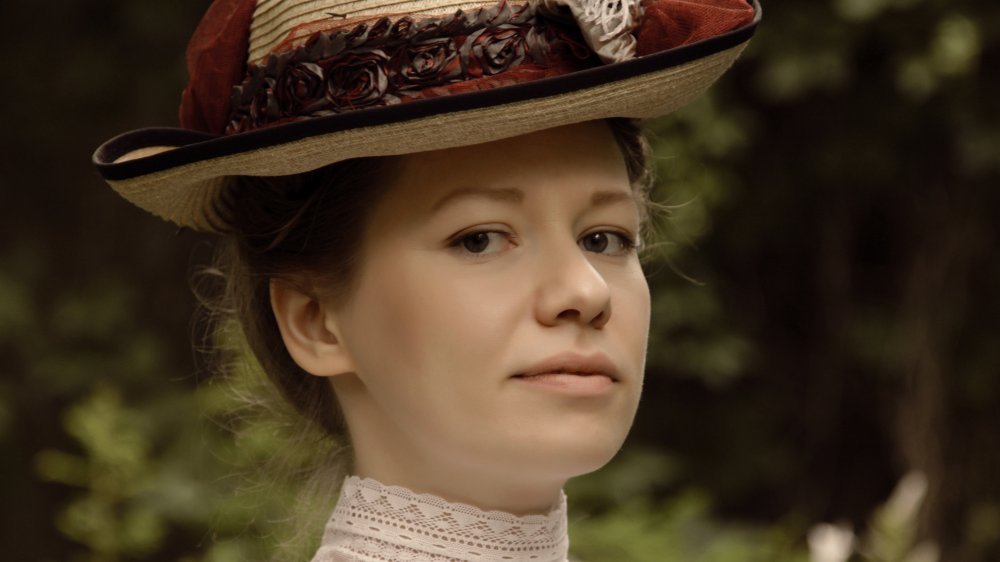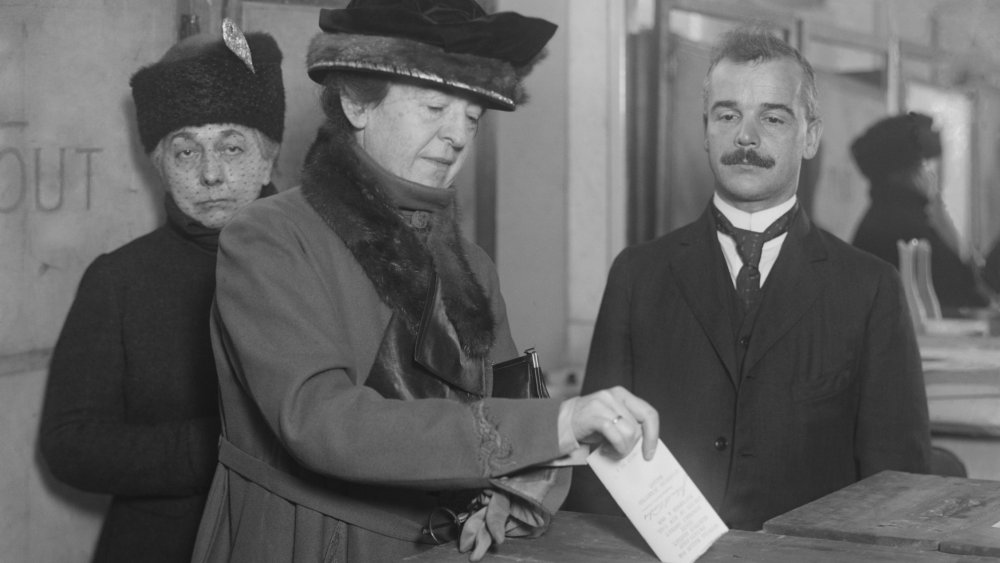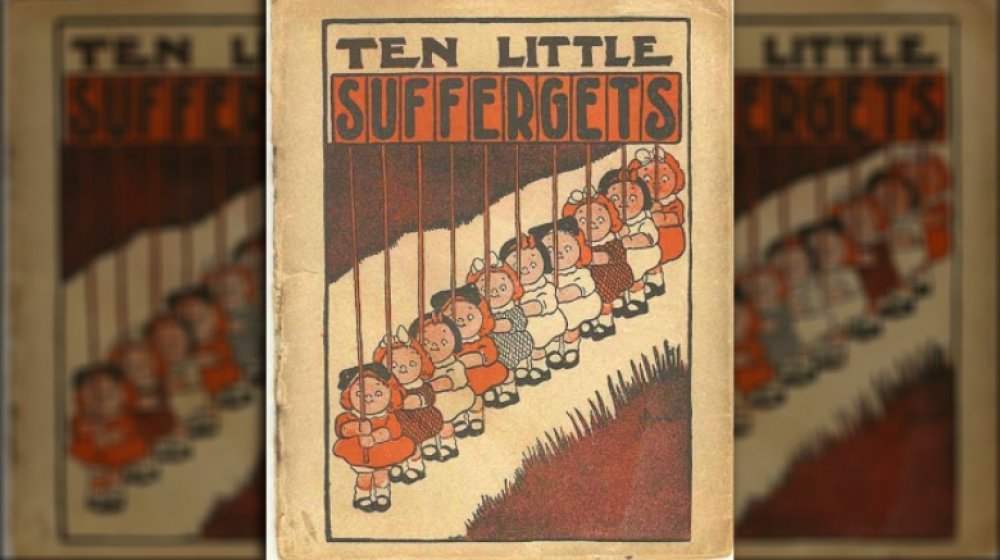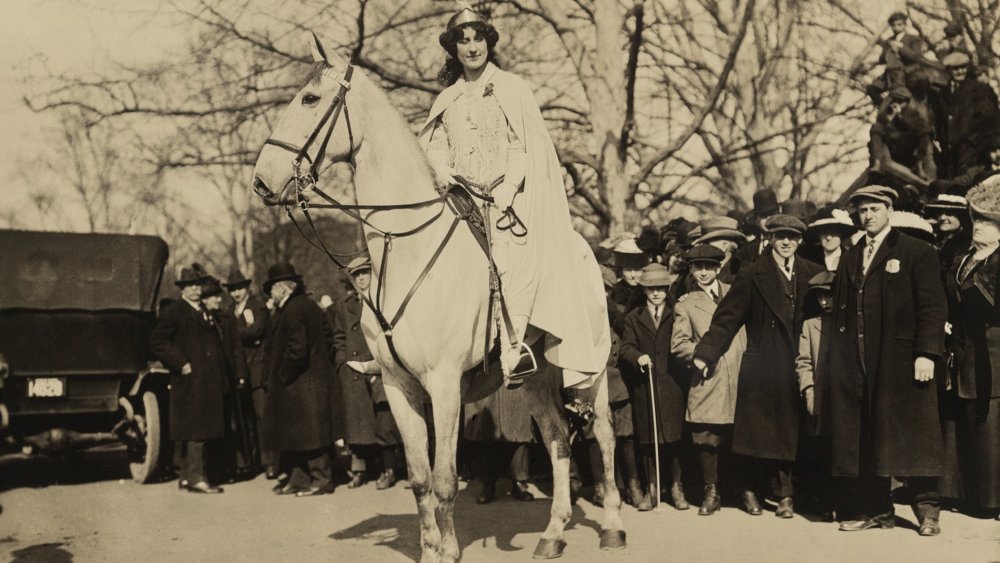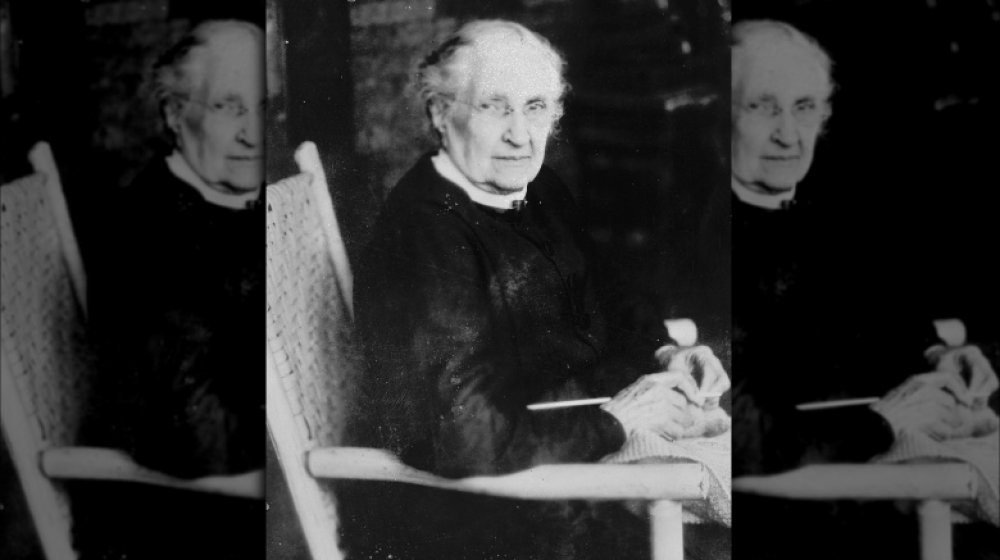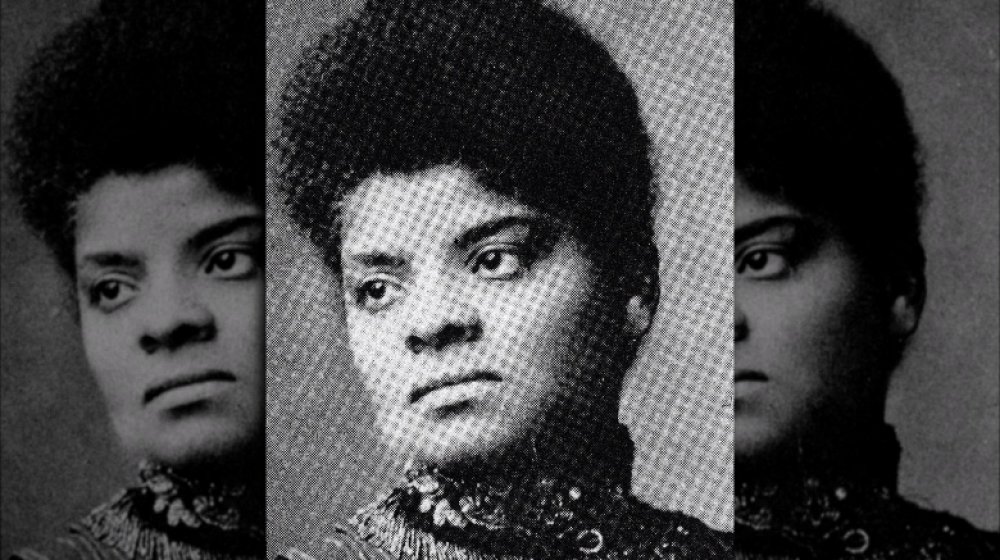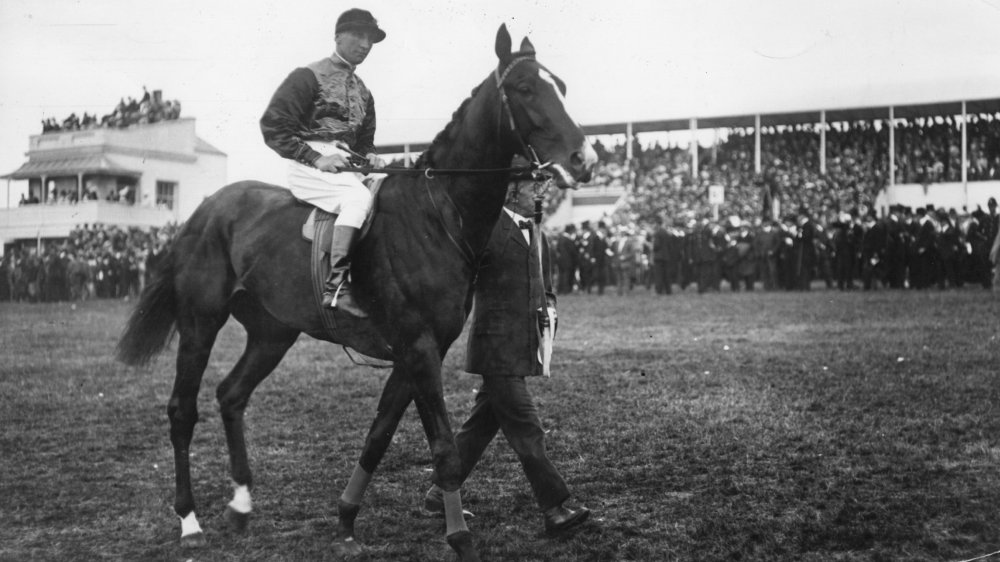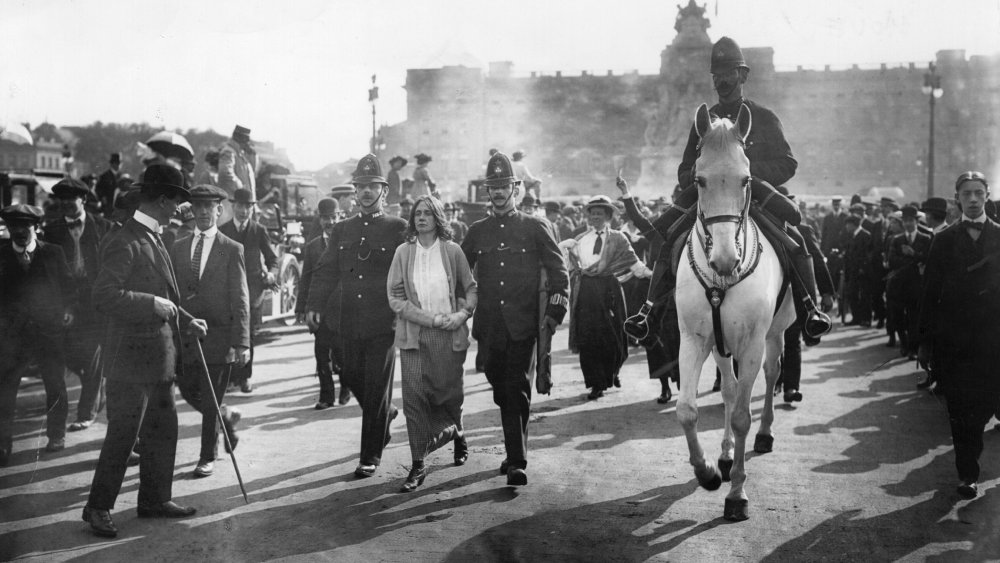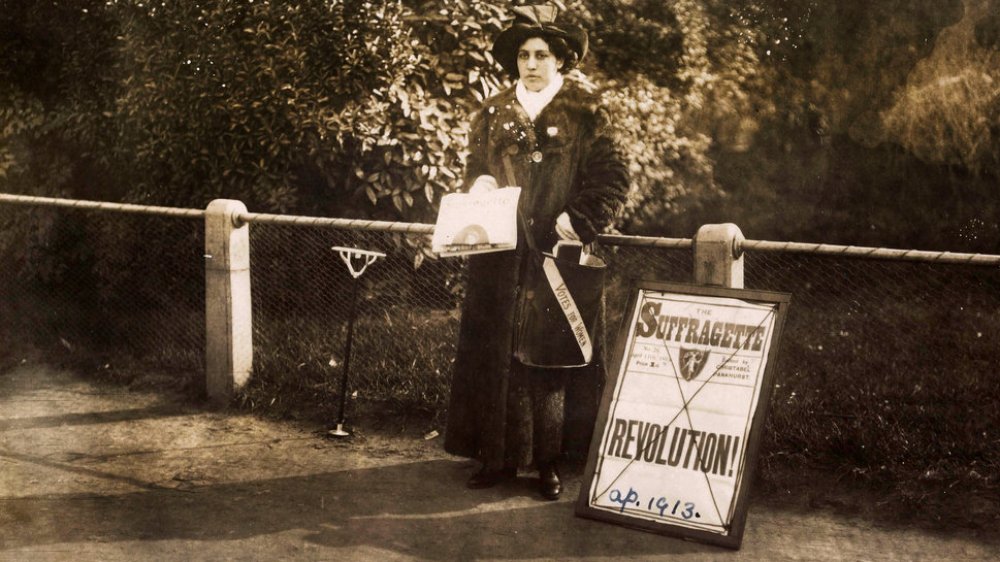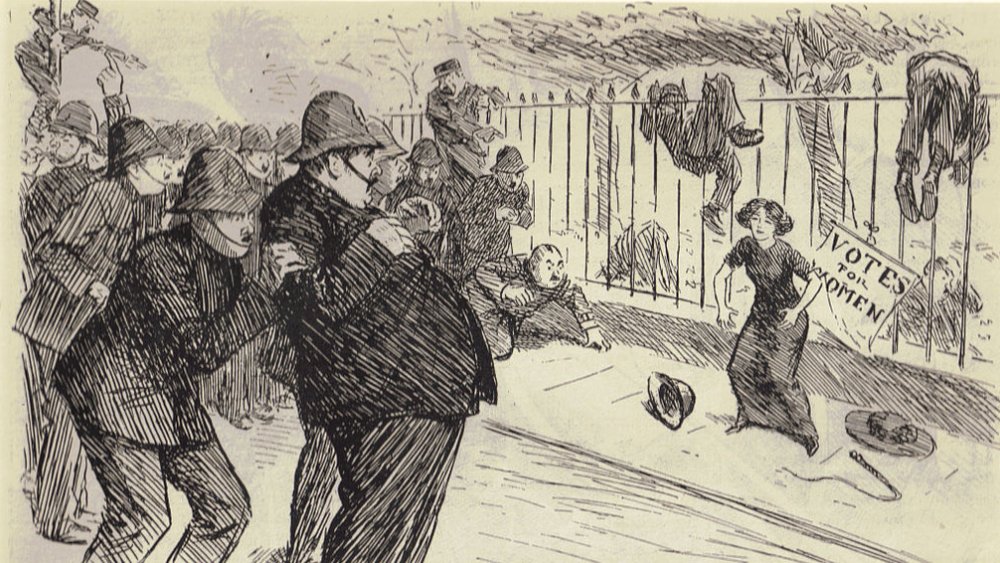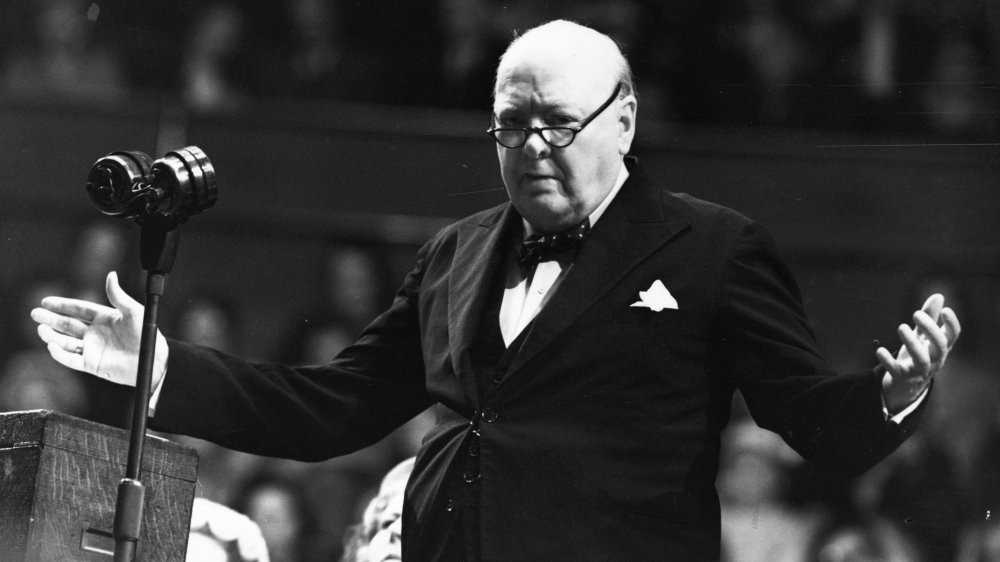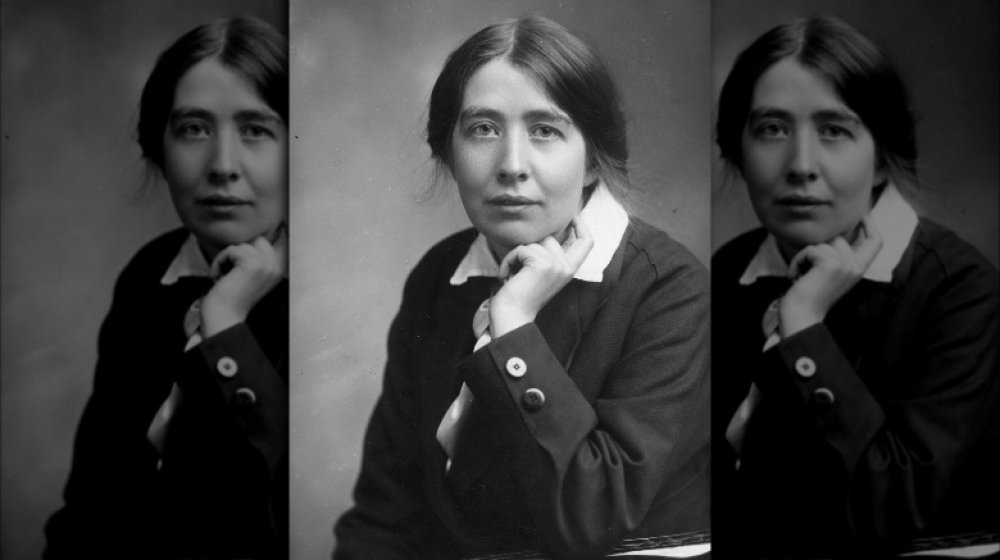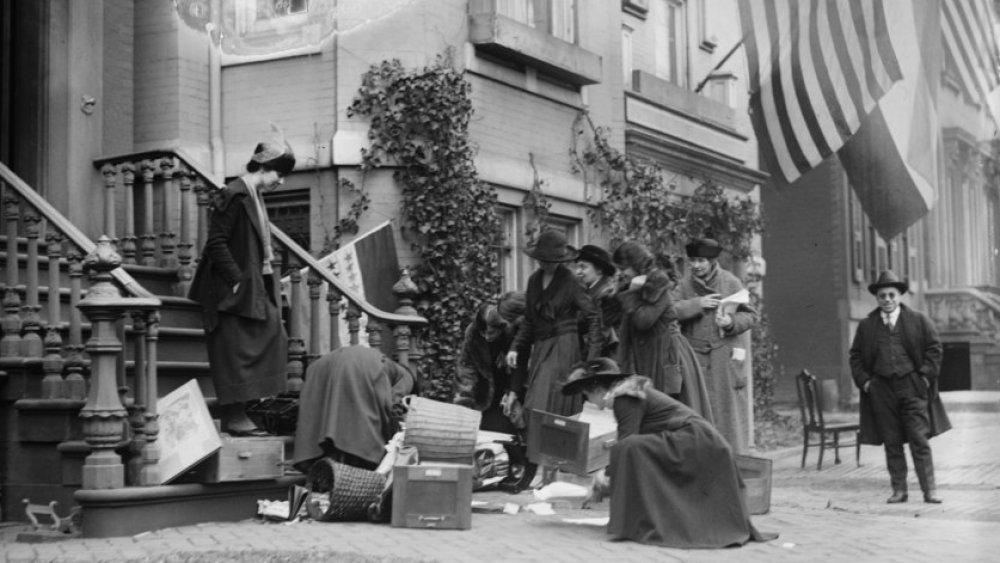The Messed Up Truth Of The Women's Suffrage Movement
For most of human history, it sucked to be a woman. You had all the most uncomfortable clothing choices, if you wanted a job you could be a wife or a nun (or maybe a nurse or a teacher if you were lucky enough to be born after the 18th century or so), and there was no such thing as an epidural. Also, you weren't really considered a human being so you weren't allowed to make any decisions beyond what to cook for dinner and you especially weren't allowed to have any say in politics.
Things might have gone on like that forever, too, except by the 19th century women were sick of being second-class citizens who were expected to do whatever their husbands told them. And they knew they couldn't just go on being polite about it, either. Change was going to require some really loud, attention-getting stuff, and some people might even have to die. With that in mind, here's the horrible, messed up truth about the women's suffrage movement.
Before women's suffrage, voting was a crime for half the adult population
In the early days of the USA, if a woman went to the polls should wouldn't just get laughed out of the voting booth, she could actually get arrested. Voting while female was a crime, and during the women's suffrage movement some women were actually arrested and convicted of that crime. One of them was Susan B. Anthony, you know, the woman whose face was on the dollar coin no one ever used because it was like the stupidest coin ever. Anyway, Susan B. Anthony was more than just a face on an unsuccessful dollar coin, according to Biography, she was an abolitionist who fronted the shocking idea that women should have the right to own property and vote. Oh and also, she believed everyone should have the same rights regardless of race or gender, and she wasn't afraid to say so out loud. Gasp.
Between 1868 and 1872 hundreds of black people and women made the disgraceful decision to — double gasp — register to vote and then — triple gasp — actually vote. In 1872, Susan B. Anthony was one of 15 women who voted in an election in Rochester, New York. She was arrested, stood trial at the expense of taxpayers, was found guilty, and ordered to pay a fine. And still, it occurred to practically no one just how stupid that was — it was nearly a half a century before anything changed.
The idea of women's suffrage was sneered at, even in children's books
For the most part, men haaaated the idea of women voters. Not all of them, but yeah, it wasn't an especially popular idea. And in those days, if you haaaated something, you could put that down in a book and everyone who agreed with you would feel extra satisfied when they read your book. Wait, that hasn't actually changed, it's just that today authors are careful to just hate generically rather than being super obvious about how racist and sexist they are. Mostly.
Anyway, according to the Saturday Evening Post, at some point during the 1910s, some misogynistic jerk wrote a children's book called "10 Little Suffergets" [sic], which was based on a racist nursery rhyme called "10 Little Indians." (We should also point out that although it's broadly used today as a benign label for women's rights activists of the time, particularly in the U.K., originally the word "suffragette" was coined as an insult.) In this sweet bedtime story that parents read to help quash the hopes and dreams of their little girls, spoiled female children are seen walking around with signs demanding "equal rights," and also "no more spanking" and "cake every day." Eventually, all these misguided little girls get distracted by stupid things or get in trouble with their daddies and abandon the cause, thus proving that girls' hopes and dreams are silly and meaningless. Sleep tight.
Suffragists were physically attacked
Today we think nothing of holding marches when we want our causes to be noticed. Marches are rarely dangerous (with a few notable exceptions), and they can send a powerful message to the people who need to hear it most. One hundred years ago, though, marches were often dangerous, especially when they were for unpopular causes.
In March 1913, the National Woman Suffrage Association (NWSA) held an enormous march in Washington D.C., the day before Woodrow Wilson's inauguration. With more than 5,000 attendees, it was the largest such event in American history and the crowd that gathered to watch did not like it one bit.
According to the Atlantic, the parade started off well and then quickly devolved into chaos. Tens of thousands of mostly male spectators lined the streets so they could jeer at the marchers. Some of them pushed, tripped, and assaulted the marchers and they did it with the blessing of many of the policemen who were supposed to be ensuring the women's safety. One hundred participants were hospitalized, and if that's not awful enough, some of the spectators even tried to prevent ambulances from reaching people who needed medical attention. "Doctor and driver literally had to fight their way to give succor to the injured," one witness wrote in the Washington Post. On the plus side, the violence brought national attention to the movement, but it's pretty awful to think that's what it took.
Virtually everyone at the first US women's rights convention died before they got the vote
Real change takes a long, long time, but the women's suffrage movement took practically forever. Many of the women who dedicated their lives to securing women's right to vote didn't live long enough to see their efforts bear fruit. In fact there was just one woman — as far as we know — who attended the first official American women's rights convention and survived to also see the 19th Amendment ratified.
According to the National Park Service, Charlotte Woodward was just 18 or 19 years old when she attended the 1848 women's rights convention at Seneca Falls. She was one of 68 women who signed the Declaration of Sentiments, and the only one who lived until 1920. But if you were imagining 92-year-old Charlotte with her cane hobbling into a voting booth for the first time, we'll have to stop you there. Charlotte Woodward never voted herself, even after it became legal. It wasn't because she didn't want to, it's because she was 92 and suffering from a myriad of health problems, including failing eyesight. "I'm too old," she said. "I'm afraid I'll never vote." And although no one seems to know for sure, it's doubtful she ever made it to the polls. So surviving to see the ratification of the 19th Amendment was bittersweet for Charlotte Woodward.
Equal rights for women, but march at the back of the parade, please
All suffragists believed women were equal to men, but not all of them believed everyone was equal to everyone. In the early 1900s, racism had its ugly fingers in everything, including suffrage marches. The Women's Suffrage Parade of 1913, for example, was supposed to be segregated — organizers wanted black women to take up the rear of the parade, rather than marching alongside their white sisters. Not a good look, ladies.
According to the Saturday Evening Post, Ida B. Wells, a black journalist and women's rights activist openly petitioned organizers for the opportunity to march in the parade in the main Illinois delegation, but organizers said "no" because they utterly failed to see the irony in asking for equal rights for themselves but being unwilling to give them to others. Evidently, there were fears that some white women wouldn't want to march with black women, so they should therefore just validate the racism and exclude everyone who doesn't sunburn after 30 minutes at the beach.
Wells did not accept the decision, though. She waited on the sidelines and boldly marched into the Illinois delegation anyway, thus defying both racism and misogyny in one fell swoop. Shockingly, she was never elected president of the Women's Rights Movement for that, though she totally should have been.
The high-profile death of a suffragette that may or may not have been intentional
In the late spring of 1913, Emily Davison bought a round trip ticket to Epsom in the United Kingdom. She planned to attend the Epsom Derby, but it wasn't because she was a horse racing fan. Davison wanted to make a public statement in front of the king. Beyond that, though, no one really knows what her intentions were.
As the race began, Davison ducked under the railing and walked out onto the track into the path of the oncoming horses. She seemed to single out Anmer, the king's racehorse, but it's not clear if she was trying to stop him or if she was committing an intentional act of self-harm. According to the Guardian, modern analysis of footage from the event seems to suggest that she was trying to tie a suffrage flag onto the horse's bridle, which is frankly something you would do only if you had absolutely no understanding about horses in general and racehorses in particular. But if she'd been deliberately trying to end her own life, it seems like there would have been little point in purchasing a round trip ticket.
Whatever her intentions were, the end result was that Emily Davison died. Anmer collided with her and struck her in the head. Davison was taken to a nearby hospital where she died four days later. She never regained consciousness.
Maggots or a feeding tube?
Evidently, people who believed women were too emotionally fragile to be trusted with voting also believed no one was too fragile to be tortured. According to the Washington Post, 33 protesters from the National Woman's Party were arrested on November 10, 1917 for the heinous crime of picketing outside the White House. The women were taken to a facility called the Occoquan Workhouse. Their male captors put one in manacles and made her stand all night long. Another was thrown into an iron bed frame — she lost consciousness, and her cellmate panicked and had a heart attack. No doctor was called until the next morning. The jail was full of rats and the food was full of maggots, which probably made the hunger strikes some women went on much easier. No matter — officials force-fed the strikers with a tube, which seems a little counterproductive since the process often caused violent vomiting. Officials tried another approach — they interviewed the suffragists in an attempt to find reasons to have them committed.
This went on for two weeks, until the prisoners were finally released on bail. The following year, the D.C. Court of Appeals went, "Hmm, that was totally unconstitutional," and the suffragists were all, "Duh." But the end result of all that torture was the public finally started feeling sympathetic towards the cause. Two years later, the 19th amendment was ratified and the former prisoners could at least take comfort in knowing it hadn't all been for nothing.
Upper class suffragists were tolerated. Everyone else ...
It was dangerous to be a suffragist, but how dangerous depended a lot on how much money and/or status you had. So basically, it was like every other social justice cause in the history of ever. According to the Guardian, one of the U.K.'s most outspoken women's rights activists was an Indian princess named Sophia Duleep Singh, who prior to becoming a suffragist was best known for her fashion sense and lap dogs. But as she grew older she became a devoted suffragist, engaging in increasingly risky activities including throwing herself at the prime minister's car. But she was never arrested for any of her deeds and therefore became only a minor character in suffragist history.
It was different for poor women. In 1909 a woman named Selina Martin threw an empty bottle at the prime minister's car and got arrested for her troubles. She and fellow suffragist Leslie Hall were denied bail and outside contact, shackled, force-fed (because that was like a thing that jailers automatically did to suffragists) and forced to wear wet clothes for six days. Their story did make the news, and it was largely understood that their poor treatment was a result of their lower social class. "These are women quite unknown," said prominent suffragist Mary Gawthorpe, "Nobody knows or cares about them except their own friends. They go to prison again and again to be treated like this, until it kills them!"
"Suffrajitsu" ha ha ha so clever
On the one hand, you've got men moaning about how voting women will upset the the great and misogynistic responsibility men have towards women, and on the other hand, you've got men assaulting the women who came out to protest, so there were definitely some mixed messages floating around England in the 1900s. It's really not so surprising that some women felt so afraid for their own safety that they wanted to learn how to protect themselves.
Four-foot-11 Edith Garrud made it her mission to ensure that members of the Women's Social and Political Union (WSPU) knew how to fight back against oppression, physically as well as politically. She knew jiu-jitsu — a Japanese martial art that teaches practitioners to use an opponent's strength against him — and she was determined that every suffragist ought to know it, too.
The public responded to Garrud's dedication with respect and admiration, and the women were never harassed again. Just kidding. According to the BBC, women who learned jiu-jitsu were mercilessly ridiculed by the press, and before long there was a new, so-very-ingenious term of derision: suffrajitsu. Never mind. These skilled women shut everyone up when they formed a "bodyguard" detail around WSPU leader Emmeline Pankhurst and engaged in hand-to-hand combat with around 50 policemen during an on-stage brawl. What was that about suffrajitsu again?
A suffragette attacked Winston Churchill with a dogwhip
We shall fight on the beaches, we shall fight on the landing grounds, we shall fight in the fields and in the streets ... we shall never surrender. Not even if one of them has a dogwhip.
Yes, the then-34-year-old MP Winston Churchill was on his way to Bristol for a speech to the Anchor Society when Theresa Garnett pushed her way through the crowd, brandishing a whip. "Take that in the name of the insulted women of England," she cried as she struck Churchill in the face. Churchill fought back and after a brief struggle was able to take the whip away from Garnett. The police arrived and took Garnett into custody, and then Churchill put her whip in his pocket. Super badass, dude. Who needs the Protection Command (the British version of the Secret Service), right?
Anyway, according to the Guardian, Churchill later dismissed his attacker as "only one of those foolish women," once again adding fuel to the suffragist fire. Garnett was arrested for assault but Churchill couldn't be bothered with going to court so he declined to press charges. Instead, Garnett was convicted of disturbing the peace and sentenced to one month at Horfield Prison.
Some of the suffragettes were kinda terrorists
We like to remember the suffrage movement as mostly just women with picket signs bringing about change through peace, because Gandhi and Martin Luther King taught us that that's how you're supposed to do things. But that's not really how the suffrage movement went down. No, people didn't really pay any attention to women with picket signs because it was too easy to just watch them for a few minutes and then elbow your buddy and whisper something about how adorable it is when women think they deserve the same rights as men. So a lot of activists became radicalized, because it was starting to become clear that change wasn't going to happen unless someone started making a lot of noise.
In the United Kingdom, the primary purveyors of noise were members of the Women's Social and Political Union (WSPU). They didn't just picket loud, they engaged in activities that by modern standards would be considered terrorism. According to History Today, the WSPU and related groups were responsible for placing hundreds of bombs on trains, post offices, churches, banks, and theatres. Some historians even maintain that suffragists invented the letter bomb.
The distinction many historians emphasize is that the bombs planted by suffragists never killed anyone. They caused a great deal of damage, but they were never intended to take human life, just to attract attention to the cause. So were suffragists terrorists? Depends on who you ask.
Arson was not off the table for suffragettes
Late in the movement, activists were starting to get desperate. Decades had passed without change. Marching wasn't working. Hunger strikes weren't working. The dog whipping of future prime ministers wasn't working. It was time to try a different approach.
The Women's Social and Political Union (WSPU) adopted bombing as their go-to way to attract attention to their cause, but bombs have drawbacks — in the 1910s, a bomb you could cobble together out of stuff you found for sale in local shops was not super powerful and made a short, not-very dramatic statement. A fire, on the other hand, was a prolonged, very visible way to let someone know you meant business.
According to History House, suffragists in the United Kingdom began targeting the empty homes of prominent people. Not all of the arson attempts were successful, but in some cases, such as the home of David Lloyd George, Chancellor of the Exchequer, the suffragists succeeded in causing serious damage. Was it right? It certainly wouldn't be tolerated today. But history should remember that the women's suffrage movement had a long history of being brutally shut down, ridiculed, and ignored. Desperate people do desperate things. And today, women have the right to vote in the United Kingdom, so take that however you want to.
